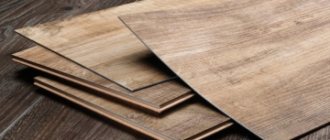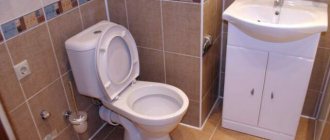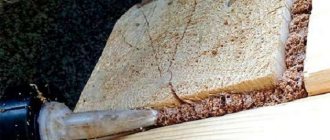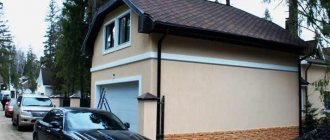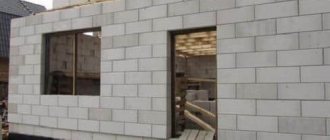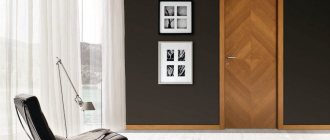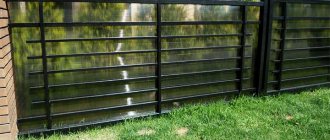It is perhaps difficult to name a more common finishing material than tiles, and this popularity is largely due to its diversity - ceramics and glass, natural stone and porcelain stoneware, vinyl, quartz vinyl and PVC, leather and metal, wood and even rubber. There are so many different materials that tiles are made from and wherever they are used – on walls, on ceilings, on floors, in the interior, on the facade, in landscape design. Despite the huge number of varieties of this material, differing in raw materials, shape and texture, all tiles are similar in installation technology - with a seam. However, recently, seamless tiles, which, after laying, form a monolithic coating, have become increasingly interesting among consumers. We’ll tell you what’s special about it and how to work with this cladding in this material.
Is it possible to lay tiles without seams?
Of course you can lay tiles without seams! Seamless tiles are currently in great demand. It does not require additional effort and time for grouting joints and at the same time allows you to create a complete, uniform surface of a wall or floor.
Today, seamless floor tiles are very popular, which allows you to create a chic relief surface.
How to choose finishing material?
Tiles are selected not only in accordance with their preferences, but also in accordance with their intended purpose - slippery polished tiles are not suitable for the bathroom, but only for the hall. For the kitchen, you also do not need to choose slippery tiles, only rough ones, so as not to accidentally slip with warm water. To fill the joints, silicone and epoxy grout, silicone sealant or sealant are used.
The size of the tiles is selected in accordance with the dimensions of the area - it is necessary that a certain amount of tiles fit into the perimeter of the area without cutting. If a couple of cm are missing, they can be hidden under the baseboard and border, and cutting off the excess 1-2 cm from porcelain tiles is problematic. When purchasing, always check the lot number to ensure that the pair of packages matches. This is the only way to guarantee consistency in color and size.
Porcelain tiles, like any tile, are always purchased with reserves, taking into account:
- Detection of defects in packaging;
- Some of the tiles may become damaged when cutting;
- Adjustment will be needed.
If you are planning a colored mosaic installation, then before laying the tiles without seams, at the purchasing step, ask the hardware store about the remnants from other batches. It is quite possible that you will be able to choose a good material for a socket or panel, and at the same time you can save a lot. Prices for leftovers are reduced by up to 40%, but these must be suitable size 1 rectified tiles. But you shouldn’t buy leftovers from another batch; most likely, you won’t be able to match the tiles exactly by color and texture, other than dark or snow-white.
What is rectification
The rectification process involves additional leveling of the edges of the finished ceramic tiles using diamond cutters using high-precision equipment.
Rectified porcelain tiles are tiles with cut ends.
To rectify the material, pressed and fired elements made from porcelain stoneware undergo a trimming process to give them a perfectly even rectangular shape. This technology is intended to produce a monolithic ideal floor or ceiling surface from ceramic elements used during cladding work.
Externally, it differs from the usual one in the absence of chamfers on the sides.
Why are stitches needed?
Traditionally, tilers make identical joints between the tiles, which are then sealed with grout. The same thickness of the seam can be achieved using plastic crosses.
What purpose do the seams serve?
- Ceramics are made from clay and tend to expand when exposed to moisture or temperature changes. So if you are laying ceramics in the bathroom or on a kitchen splashback, you cannot do without seams: the seams allow the tile to “play.”
- Joints allow you to play with contrast and create interesting visual effects. Light ceramics and dark grout look unusual and original, and the combination of red ceramics and blue joints is extravagant.
- Wide joints help hide errors in the dimensions of ceramic tiles. If the dimensions differ by several millimeters, tiles without seams will highlight these defects.
Advantages and disadvantages of seamless tiles
Rectified porcelain tiles have many advantages compared to conventional ceramic tiles:
- There is no need to use grout. Since there are no seams, no time is required to install joints between tiles.
- The absence of seams between the ceramics prevents the accumulation of harmful microorganisms and dirt.
- An impeccable monolithic surface adds aesthetic appeal and presentability to the design of the room.
The craftsman requires high qualifications to ensure high-quality installation of this material.
However, no matter how ideal seamless tiles may seem, they still have some disadvantages:
- Highly qualified specialists must work with such material, since the installation process requires very precise actions and calculations.
- Not every surface is suitable for laying with this material.
- Irregularities in the facial surface of the ceramic can lead to additional difficulties.
- Temperature changes can negatively affect the service life of porcelain stoneware.
Seamless floor tiles can have both small and large patterns, reminiscent of marble or granite.
Before using seamless ceramic tiles, it is necessary to evaluate all the shortcomings of the base on which it will be laid. The ideal base is a durable and even concrete surface.
For seamless cladding of walls, ceilings and floors, the best option is large-format rectified porcelain tiles.
It allows you to accurately form a perfectly smooth, uniform surface.
So, for example, large ceramic tiles are ideal for exceptional cleanliness of seamless bathroom coatings. They will help you create a single, laconic design of the entire room, using slabs of the same size for cladding the floor, ceiling and walls of the bathroom.
Such tiles are not afraid of exposure to detergents and are very easy to care for.
What does styling without seams give?
Before you start laying without gaps between the tiles, you need to find out what this will do and the technological nuances that can complicate the process. Seamless installation has a complex technology; only specialized materials are used.
Installation can be called seamless in cases where the distance between the plates is minimized, but not equal to zero.
Attention! Gaps between the tiles and the wall are necessary to compensate for the dynamics of the material during temperature fluctuations.
Decorative coating
Here are the advantages of laying closely:
- Monolithic surface.
- Dirt does not accumulate, which makes cleaning the coating easier.
- There is no need to buy grout.
There are also disadvantages:
- When temperature changes occur, the material deforms.
- Careful surface preparation.
- Difficult installation.
In order for the work to be carried out efficiently, you need to comply with the characteristics of the material used.
Types of tiles without seams
Seamless tiles very often imitate natural stone - it can be marble or granite; it looks very impressive in large, spacious rooms. Tile imitating concrete fits perfectly into loft-style interiors.
Seamless floor tiles can be used to finish ceilings in private houses, apartments, public facilities, etc.
For the floor option, seamless tiles with wood imitation are often used - they will give the interior a feeling of comfort and warmth.
Seamless tiles are most often produced in large formats - starting from 45x45 cm. They look most impressive on large spaces of floors or walls.
This coating is quite difficult to install. You need to have special glue.
There are other formats: 20x60 or 30x90 centimeters. The dimensions of large-format tiles are 1.5x3 meters.
What's behind this?
In fact, you shouldn’t take construction terminology literally. Laying porcelain tiles without seams means that they simply become less noticeable. Usually this is 1.5-2 mm; it is not recommended to do installation without them at all. Why not? Because there is a risk of the glue shrinking, as a result of which the tiles will begin to creep on top of each other, swelling and cracking. Therefore, even taking into account the characteristics of the coating, glue and the room itself (bathroom or corridor), you still need to lay it taking into account the minimum gaps of 0.5 mm. But in general, the picture turns out to be monolithic, however, it all depends on who is laying the porcelain tiles. Seamless styling is simply a technique that can be done in different ways.
How to choose the right quality seamless tiles and adhesive for them
Manufacturers of finishing materials almost always specify a specific adhesive for the porcelain tiles they produce. Do not neglect the manufacturer’s advice: they indicate the required adhesive based on the composition of the components included in a given batch of tiles. Since seamless tiles are quite an expensive product, it is better not to skimp on glue, otherwise you can lose much more by getting poor-quality cladding of the room. The latter can sometimes even lead to injury.
Only a professional can perform high-quality installation. If you do it incorrectly, then the drawing will not converge and discrepancies will be visible.
When choosing tiles, you need to pay attention to some details:
- All tile elements must belong to the same batch and production series; they are indicated on the product packaging. Otherwise, you may end up with the wrong pattern or the wrong shade, which will be very noticeable on the floor or wall.
- It is necessary to carefully inspect each tile to ensure that there are no microcracks, scratches or chips.
- High-quality porcelain tiles should have perfectly smooth edges and uniform dimensions.
- Several types are suitable for seamless installation, differing in strength and reliability - this information should be specified on the labeling.
- For seamless masonry, porcelain stoneware or lithoceramics are used.
- It must be taken into account that tiles with a rough surface are selected for flooring, and tiles with a smooth and glossy surface are selected for walls.
- It is advisable to buy 10% more tiles, just in case.
The use of seamless tiles is one of the most expensive and beautiful options for high-quality floor organization in an apartment or office.
Seamless laying of porcelain tiles
Installation
Laying porcelain stoneware on the floor without seams is not carried out according to complex patterns. Everyone knows the simple straight styling. There are complex mosaics. But the seamless method is used to create the effect of coating integrity, so using a complex option is impractical. Tiles without seams are made in the simplest way - direct.
Important! Any type of porcelain tile can undergo the surface rectification process: structured, matte or glossy. They cost more, but there is no need to grout, which is expensive.
Preparing the base
In order for the coating to lay down correctly, it is necessary to prepare the base. It must be level, not deformed and have sufficient load-bearing capacity.
If the base has minor differences and defects, then this will have to be overcome with tile adhesive of a smaller thickness, which will lead to a decrease in adhesion strength and the occurrence of stress differences.
It is advisable to level the base with a self-leveling mixture, then clean it of dust and prime it. If a wooden covering is used as a base, it should not spring, because it will lead to chips and cracks of the covering. To protect the floor material, a reinforcing mesh is used.
Tools for laying floor and ceiling tiles
To lay ceramic floor or ceiling seamless tiles, you will need the following tools:
- construction mixer;
- building level and measuring tools;
- glue container;
- spatulas (notched and rubber);
- grinder with diamond blade;
- suction cups, marker, plastic crosses.
All work, both preparatory and laying seamless tiles, is carried out according to the same technological methods as for ordinary tiles.
Necessary materials:
- porcelain stoneware;
- sealant, grout, glue, primer.
Surface preparation
This is the first thing that a master or the owner of an apartment who is planning to make repairs should think about. The more ideal you want the surface to be after installing the coating, the better the base should be. In this case, it will not be enough to simply pull it out with a spatula. Although if you are a true professional in your field, then maybe you will be able to cope with the task. But most often, the installation of porcelain tiles without seams is carried out after applying a self-leveling leveler.
How to lay tiles without seams
Seamless laying is a more labor-intensive process than conventional laying with seams, which hide not only the errors of the tiles, but also possible inaccuracies in the work of the master. Working with rectified material requires special scrupulousness and precision, since in this case the master does not have a reserve of additional millimeters.
Try to glue the elements to each other as tightly as possible.
When laying seamless tiles, the influence of thermal changes and displacement caused by shrinkage of the building should be taken into account. Installation is possible in rooms with a uniform temperature; in this case, you should forget about warm floors (it is better to use installation with joints of 0.5-1.5 mm). Seamless installation is also not recommended in new buildings that have not undergone shrinkage.
Installation of this facing material can only be carried out on a level base that has sufficient strength.
Even with the most dense installation, grouting is possible - it will help hide the tonal difference between the elements of the slabs. The fugu must be selected that is elastic and has high adhesion. It is better to choose the tone of the grout in perfect combination with the tiles so that the seams are completely invisible.
With the help of seamless tiles, it has become possible to create timeless interiors.
The best way to get rid of seams is to lay very large format slabs, especially in small rooms. For example, finishing a bathroom can be done without any gaps between adjacent elements. The dimensions of the slabs can reach up to 3x1.5 meters. However, this cladding option is very expensive. The next drawback is the obligatory help of a second person; it is simply unrealistic to cope with large-format tiles alone.
The tile perfectly imitates marble, natural stone, and other types of materials.
Preparatory stage
Laying seamless tiles, just like regular tiles, begins with careful preparation of the base. The surface must be free of cracks, chips, depressions or bumps, without the slightest deviation anywhere in the room. The ideal base is a concrete screed; it will extend the life of the porcelain stoneware. For a high-quality coating, you need to sift the sand and use only fresh cement, since over time it loses its qualities.
The screed can be either an ordinary sand-cement mortar prepared by hand, or a ready-made mixture diluted with water in the required proportion.
Installation of waterproofing
In wet rooms, waterproofing is installed before laying seamless tiles. It must be carried out over the entire floor area, extending 20-30 cm onto the walls. Wall-mounted moisture protection is used in shower areas, bathtubs and other plumbing fixtures installed in bathrooms.
Liquid waterproofing “liquid rubber” or bitumen-latex are the most convenient. Cement-polymer coating waterproofing is excellent for floors and walls, especially if they will be tiled in the future.
The screed requires thorough drying, and laying tiles on it should begin after five or seven days.
After the waterproofing layer has dried, a screed is applied. After the screed has dried, you can install the tiles.
Installation process
To answer this question briefly, the process of laying seamless tiles is practically no different from tiling surfaces with ordinary tiles. The installation process itself consists of several stages:
- The preparatory stage includes preparation of the base surface, as well as the selection of materials and necessary tools.
- Next, the prepared base is marked and the location of the first tile is determined.
- Then the stage of wetting the tiles and removing dust.
- Preparing tile adhesive and applying it to the rough surface of porcelain tiles.
- Apply the adhesive evenly to a clean, level surface using a notched trowel. When distributing the adhesive under the tile, no voids should form, which could later lead to the formation of cracks on the surface of the tile.
- The first tile is installed on the marked base strictly in its place. Lightly tap with a rubber hammer and bring to the required level of evenness.
- Laying the first element is a very crucial moment, since the evenness of the entire laid surface depends on it. All subsequent tiles are laid similarly to the first and the level of evenness is checked each time. Where pipes or door jambs exit, porcelain tiles are cut to achieve a convenient shape and size.
After laying each fragment, the entire surface is checked for alignment and horizontality using a building level.
Laying seamless tiles is a very responsible process and requires a lot of patience and great care. A person without certain skills and abilities is unlikely to cope with such work.
If you want, fasten adjacent rows with special construction tape for safety, so they will not move apart when the glue dries.
Installation of tiles with a pattern
Seamless installation is used to create flawless solidity of surfaces. However, if the entire room is laid out in one color scheme, this can cause a feeling of “emptiness”. Therefore, seamless tiles are laid out using various combinations: zebra, herringbone, circles, rows, chaotic mosaics, checkerboard patterns and perimeter selection.
The formation of exquisite patterns when using a seamless installation method is achieved through the contrasting textures of marble, porcelain stoneware and other materials.
Based on the complexity and accuracy of the selection of patterns, surface cladding using various laying algorithms requires preliminary design of the pattern. To do this, special programs are used that take into account the structure and dimensions of the room, and the dimensions of the tiles.
Laying with a mosaic, a ladder, in a checkerboard pattern, with a rosette in the center and a frame in the form of a perimeter and many other options is used.
Master installation of seamless porcelain tiles
Experienced craftsmen advise laying seamless tiles together. One person will glue the fragments, and the other will press and align the tile elements. It is especially easy to work with two people when covering the ceiling surface. Here, for convenience, you will need construction sawhorses or a stable, durable table. Many videos with step-by-step execution of work can be found on the Internet.
Craftsmen have to adjust such tiles to minimize gaps and create conditions for perfectly even laying by grinding their edges.
When installing a plinth as a final element, its type should be taken into account. If you have an original design, you should be careful not to spoil its design when cutting it to the desired size. If it is ordinary, just cut the required length at an angle of 45 degrees, apply glue to the edges and press the plinth to the ceiling or wall, waiting for a certain time.
Such work requires significant time and labor effort, but the result is genuine masterpieces that embody any design ideas.
Seamless styling is not just aesthetically pleasing, but very, very beautiful. Even despite all the difficulties in the work, the result is worth it!
How to seamlessly lay porcelain tiles
Special wedges
This technology has recently appeared in private construction, so it is useful to know the technology for proper installation:
- Prepare a level base that will not create fracture stress.
- The optimal slab size is 600x600 mm. Large-sized material leads to a reduction in joints and the creation of a complete coating. The larger the slab, the smaller the number and area of joints.
- Place the modules with a small gap to ensure safe operation of porcelain stoneware slabs. If there is no grout, which serves as a buffer, between the modules, then the slabs break. As a grout, a special epoxy compound is selected to match the tone. In this case, the thickness of the seams is no more than 1 mm.
- Work is carried out at temperatures from +5 to +30 degrees.
- For a certain type of porcelain tile, select the appropriate adhesive composition. The quality of installation depends on the reliability of the fastening.
Below are step-by-step installation tips. The general installation technology is similar to conventional installation, so we will not go into details.
Tips for laying porcelain tiles
- If the sketch of the surface includes a panel, then it is better to start from the center of the room. The panel is located in the middle of the room, which is determined by the intersection of strings stretched diagonally along the walls.
- Apply adhesive to lay one tile and level it with a notched trowel. Make sure there are no air bubbles.
- Lay tiles. After that, the horizontal evenness is checked and the laying of adjacent slabs proceeds. Make sure that the overall horizontal level is accurate each time.
- After the floor is laid, leave for 3-4 days for the glue to harden.
- If a minimal seam was used between the slabs, then grouting is carried out. To do this, use a rubber spatula. They also remove the excess.
- Many manufacturers treat their products with wax to prevent them from being damaged during transportation. It can be removed with detergents.
Although the technology for seamless laying of porcelain tiles requires a lot of effort and time, the end result is worth the effort.
Seamless method for wall cladding
One of the options for laying porcelain stoneware without a gap is found in imitation parquet boards - seamless textured tiles on the floor. Watch the video on how to lay porcelain tiles under wood:
Average score of ratings is more than 0
Share link
Comments There are no comments yet, but you could be the first...
Which porcelain tiles can be laid without seams?
One of the options is Italon porcelain stoneware. Laying without seams is not difficult, it just requires effort and time. Therefore, we can say that such a task is feasible for any person armed with desire and patience. The first thing to do is to buy rectified porcelain tiles of the same caliber, for example, Italon Urban porcelain tiles, Italon NL-Wood porcelain tiles, Italon Charm porcelain tiles. There are other options, see the catalog of the site itker.ru. The second is to make the base perfectly level. Third, take responsibility, since no ceramics can be installed seamlessly. Any building materials can expand and contract under the influence of the environment. If the products are laid tightly end to end, then they simply will have nowhere to expand, and as a result, the floor may become a “stake.” But in order to reduce such risks, thermal joints are made around the perimeter of the room, which will allow the floor to move.
How to make small seams when tiling with porcelain stoneware
Seamless cladding has its own new technology. Therefore, professional advice should be strictly followed:
- The slabs are laid on a floor that has a flat surface.
- The size of the product used should not be too small. When using large tiles, there will be much fewer seams.
- Finishing with porcelain stoneware is carried out if the temperature is no more than 30 degrees and no less than 5.
- You should also use the appropriate brand of adhesive for the specific type of tile.
Here are some recommendations on how to properly glue porcelain tiles:
- If the tiles have a symmetrical pattern, finishing begins from the central point of the room.
- The special glue is leveled on a small area of the room using a spatula. And the slabs are placed on the surface with glue applied.
- Using a building level, make sure that the surface is laid out evenly.
- If seamless technology is used for gluing, then the porcelain stoneware tiles should be located at a distance of one millimeter from each other.
- After completion of the work, the floor dries in three days. Then they begin to rub the seams. Usually, the grout is selected according to the color of the tile.
Valery asked a question:
I was advised by friends to put seamless porcelain tiles on the floor in a living room with heated floors. I was interested in their proposal for many reasons. Firstly, I wanted a coating with good thermal conductivity, durable and beautiful.
I was very happy with the porcelain tiles. The only thing that bothered me was the presence of seams. They give the cladding the appearance of some kind of tiled covering.
This is quite acceptable in the bathroom, but in the main room with an expensive interior I would like something more impressive. Can you tell me what seamless laying of porcelain tiles is? How is it made?
Tiler's answer:
Indeed, I already had experience when I had the opportunity to lay tiles without seams. But, I’ll tell you right away that not every material I laid was suitable for being installed without seams. A couple of decades ago, you could only buy ordinary tiles.
This material has a high coefficient of thermal expansion. Therefore, if it is laid without a technological gap, then when it expands from heating, it will break off each other from the surface. Therefore, simple ceramic tiles are not suitable for this type of cladding.
But this material also needs special material - with very good calibration and cut edges. They are cut just to get rectangular ends that can fit together almost imperceptibly. Such porcelain tiles are called rectified.
In regular tiles, the edges are slightly rounded. This happens during firing and cannot be avoided. Moreover, at high temperatures the composition of the ceramic mass is also slightly deformed.
Different batches with the same composition may have, albeit slightly, different sizes. This is another reason why finished products are trimmed. After this treatment, the tiles have almost ideal sizes and edges, which upon contact can create the illusion of a monolithic surface.
I would like to draw your attention to the fact that laying porcelain tiles without seams, even from rectified ones, will also require a responsible approach. Not every manufacturer makes such high-quality products that there will be no seams at all. You should still be prepared for the fact that the contact point between the coating elements will be noticeable.
The surface on which rectified porcelain tiles will be glued must be smooth and even. Using an adhesive composition to smooth out surface imperfections is unacceptable with this type of installation.
But don't worry, I can do the job properly, resulting in a floor without a single crack. This is good not only from the aesthetic side. When installing joints, the grout becomes dirty over time or, worse, spills out of the seams.
This requires, although rare, regular cleaning of the seams and their restoration. With seamless installation, there will be nowhere for dirt and moisture to get stuck. And the material itself is rectified only of elite varieties.
To save a little money, I recommend buying a small amount of product to place such a covering in the very center of the room, where it will be visible. Such a plot is usually a maximum of 5-6 square meters. m.
. The rest of the covering can be laid from a type of tile similar in shade and texture, or you can create a contrast not only with the seams that appear, but also with a completely different type of paving and texture. Overall, it will be impressive, especially since furniture and other interior items will almost completely absorb the appearance of the non-rectified coating.
The second important point why you should listen to this advice is the presence of a heated floor. Although porcelain stoneware has a low degree of expansion, this factor is still present. In small areas, the amount by which the coating will increase when heated will be minimal and will not cause the tiles to peel off, and the seams that are supposed to be hidden by the interior will help to avoid unpleasant situations during the entire life of the floor.
After all, the floor temperature will probably be inconsistent. Perhaps, even due to a boiler breakdown or in order to save money, you will want to temporarily turn off the heat supply to the heated floor during the cold period, and then turn it on. Such fluctuations always create a certain risk.
For seamless installation, I will also be forced to charge you more, since such work requires more time, responsibility and experience.
05/07/2011 Glossy monolithic surfaces made of polished porcelain stoneware laid in accordance with the rules of seamless technology look beautiful and elegant. Laying porcelain tiles without seams makes it possible to create various modular floor surface designs. The visual absence of tile joints does not spoil the design and provides the opportunity to lay out interesting patterns or mosaics.
Seamless laying of porcelain tiles on the floor is possible only in one case - when using rectified tiles. The peculiarity of this type of material is that after the firing process the tiles are trimmed. As a result of this process, the correct edge shape and absolutely accurate dimensions of the material are achieved. It is this type of tile that can be laid with a minimum gap that does not exceed one millimeter.
